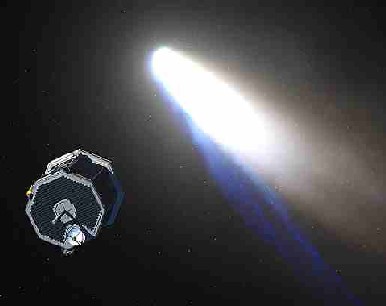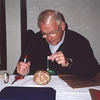This illustration shows an artist concept of the NASA Comet Nucleus Tour (CONTOUR) spacecraft. CONTOUR will study at least two comets, providing the closest look at the cometís nucleus we have ever had.
Click on image for full size
Courtesy of NASA
CONTOUR on its Way to Catch a Comet!
News story originally written on July 3, 2002
NASAís Comet Nucleus Tour (CONTOUR), launched July 3, 2002. The CONTOUR spacecraft will fly by at least two comets, taking pictures and collecting dust from the nucleus of each comet to help scientists answer some big questions.
Studying the comets may help us better understand how our own solar system was formed and what the outer planets are made of. How can comets tell us this story? Comets formed back when our solar system formed, so they may be like time capsules, telling us what sorts of changes were going on 4.6 billion years ago.
Also, studying what comets are made of may help us understand how Earth first became a good place for living things 3.5 billion years ago. When many comets showered over the earth long ago, they may have brought water and carbon, helping Earth become a place that life was able to evolve and grow.
To answer these scientific questions, the CONTOUR spacecraft will record data from at least two comets from the Jupiter family. It will encounter Encke, a comet with a very short orbit, in November 2003, and the Schwassmann-Wachmann 3 comet in June 2006, flying as close at 62 miles (100 km) from each cometís nucleus.
Last modified August 6, 2002 by Lisa Gardiner.
You might also be interested in:

Scientists believe that the solar system was formed when a cloud of gas and dust in space was disturbed, maybe by the explosion of a nearby star (called a supernova). This explosion made waves in space
...more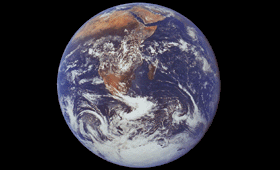
This Windows to the Universe Exploratour examines the scientific evidence of biological evolution. Take the tour to travel through 10 web pages about the scientific theory that explains how and why living
...more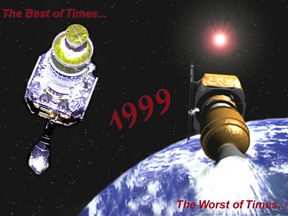
It was another exciting and frustrating year for the space science program. It seemed that every step forward led to one backwards. Either way, NASA led the way to a great century of discovery. Unfortunately,
...more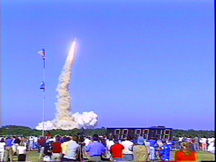
The Space Shuttle Discovery lifted off from Kennedy Space Center on October 29th at 2:19 p.m. EST. The weather was great as Discovery took 8 1/2 minutes to reach orbit. This was the United States' 123rd
...more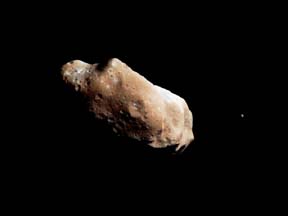
A moon was discovered orbiting the asteroid, Eugenia. This is only the second time in history that a satellite has been seen circling an asteroid. A special mirror allowed scientists to find the moon
...more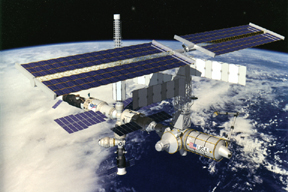
Will Russia ever put the service module for the International Space Station in space? NASA officials want an answer from the Russian government. The necessary service module is currently waiting to be
...more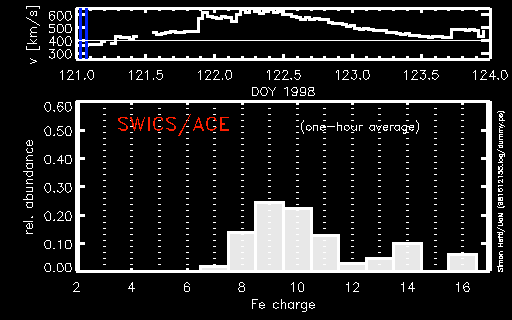
A coronal mass ejection (CME) happened on the Sun early last month. The material that was thrown out from this explosion passed the ACE spacecraft. The SWICS instrument on ACE has produced a new and very
...more


